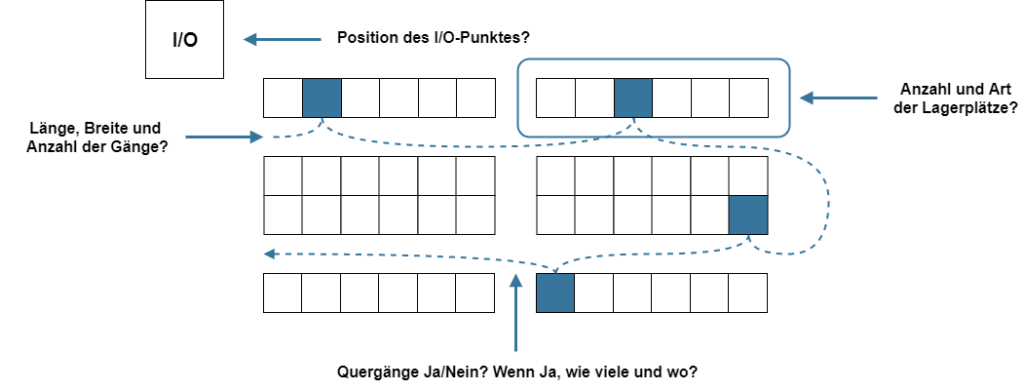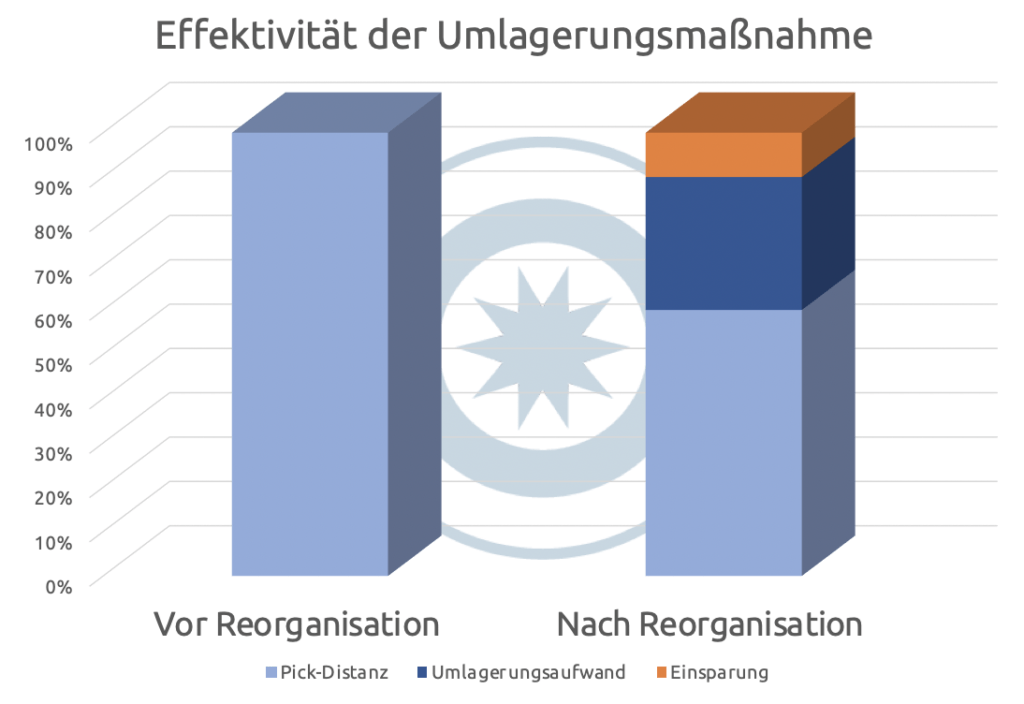How to better allocate your efforts with an automated warehouse reorganization in SAP EWM
Complex supply chains, faster lead times and shorter product life cycles result in constantly changing inventory levels and shifting customer demand patterns. Warehouse managers must remain competitive on cost while maintaining high levels of product availability and customer service under these fluctuating conditions.
A major cost driver is the picking process, which can account for more than half of a distribution center’s operating costs. The allocation of items to storage bins has a major impact on a warehouse’s performance, especially if the warehouse is operated by human pickers rather than automated.
Longer walking distances in the warehouse
Fluctuating order situations can cause the picking performance in a warehouse to drop rapidly. For example, because a supposed fast-moving item cannot show high demand due to seasonal order situation.

The storage unit blocks a valuable storage space for current fast-moving items and thus increases walking distances. For this reason, the storage bin allocation should be adapted to changed material flow requirements: Products whose withdrawal frequency has increased or decreased and therefore need to be stored closer to or further from the I/O point should be relocated for this purpose.
Restrictions in problem solving
Due to load and size limitations or special storage requirements of certain materials, not all storage bin allocations are possible.
For cost reasons, warehouse managers prefer an inductive reorganization measure that focuses on identifying weak points and eliminating them. In this way, a continuous improvement of the storage bin allocation in relation to the target function takes place and can be carried out during working hours or through overtime.
A small number of storage units are moved at short intervals, which already leads to an improvement of the target functions. This approach complicates warehouse reorganization immensely, since in addition to the restrictions mentioned above, the available resources must also be taken into account in order to ensure warehouse reorganization during ongoing operations.
When deciding whether a stock transfer is considered appropriate as part of the reorganization, the selection of the stock transfer route plays an important role, as it has a considerable influence on the effectiveness of the measure.
As a result, careful decisions must be made as to
- which storage units,
- where,
- how and
- and when they should be transferred.
This measure reduces the use of resources
To support a warehouse reorganization, SAP EWM offers a standard functionality, which, however, is based on a static valuation basis and also does not perform a cost-benefit analysis.
As part of a research project in cooperation with leogistics, an efficient, cost-considering and automated warehouse reorganization was developed in SAP EWM, which is based on a multidimensional evaluation basis and is fully integrated into the warehouse management monitor.
Divide your strength
The goal of this automated reorganization is to make clear recommendations, which are displayed using a traffic light system and a ranking. The complexity of this determination is kept away from the user.
The ranking consists of a multi-dimensional evaluation basis:
- Demand stability – How stable is the demand for the product?
- Importance – How far is the handling unit from the optimal storage location?
- Urgency – How long has the HandlingUnit been out of stock?
- Cost/Benefit – How worthwhile is the relocation of the HandlingUnit?

In combination, these scores result in a reorganization score, which in turn can be influenced by weighting the individual scores. The higher the score, the higher the recommendation for warehouse reorganization for the corresponding handling unit.
Become active
In order not to hand over the responsibility of warehouse reorganization completely to SAP EWM, it is possible for the user to select manually from the stock transfer requirements suggested by the system. The most important derivation from the results of the reorganization is usually the reduction of the individual pick distances. At this point, the system ensures that the selected reorganization is feasible: for example, in the case of a high warehouse fill level, a reorganization only makes sense if the optimal target location has sufficient capacity.
Key issues:
- Which handling units have a need for stock transfer?
- Which relocations are worthwhile?
- What capacity does the target location have?
- What is the optimal stock transfer route?
Before-After Comparison

Finally, the success of the reorganization measure depends on whether the now created pick distance and the stock transfer effort together are below the original pick distance.
We would be happy to support you in analyzing your warehouse organization in SAP EWM. If you have any questions about this or other topics in the blog, please feel free to contact us at blog@leogistics.com.
Julian Richter
Consultant SAP EWM



